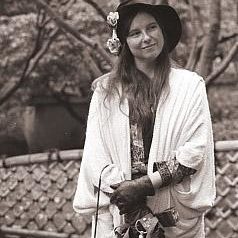My quilt – Sekhet-a-ra – was accepted into the 2015 Sacred Threads Exhibit to be held July 10-July 26, 2015 at the Floris United Methodist Church, Herndon, VA (outside Washington, D.C.). I met the exhibit founder – Vikki Pignatelli – last year when I was teaching at Empty Spools in California and she encouraged me to enter my work. She told me she had created this special venue to show works of spiritual significance. When I described my quilt, she said she thought is would be a perfect subject for the exhibit’s mission. I am so delighted that the quilt was accepted and will be shown.
This quilt is a memorial tribute to my father who instilled a deep love for ancient cultures in me when I was young. He was a Rosicrucian and his passion was ancient Egypt but he encouraged me to read books about the mythology and art of many different ancient civilizations. Among the books I read were one about Egyptian art and architecture and a novel ‘The Winged Pharaoh’ by Joan Grant. This was not an ordinary ‘novel’ but rather what the author called a ‘far memory’ book as she claimed she was able to recall past incarnations and her books are based on those recollections of past lives. The book, which left a deep impression on me, told the story of a princess – Sekhet-ar-a (which meant ‘beloved of Ra’ – Sekeeta for short) who undergoes training as a temple priestess to fulfill her destiny as wife of the pharaoh and spiritual leader.
The art book contained an enigmatic picture of a roughly carved wooden funerary mask. No gold or finery like King Tutankhamen’s jeweled coffins – just a simple mask with an adorned wig attached. The picture is credited as simply the head of a woman; no record of who she was and only a vague reference to what dynasty it may have dated from. Despite its crudeness, the mask is one of the most expressive faces I’d ever seen in Egyptian art with a sad sweet smile to her lips reminiscent of Leonardo DaVinci’s ‘Mona Lisa’. The picture fascinated me and I would return to is time and again (in fact, the book falls open to that page when balanced on its spine and allowed to fall open).
In my early adulthood, while I was still actively drawing and painting quite a bit, I decided to make a pencil drawing of the mask. This was followed many years later with a quilt version of the mysterious woman’s mask. I will admit, it was a lot harder to capture that gentle smile in fabric and the drawing does that more justice than the quilt does. While I never intended this to be a tribute to my father, I could not help thinking of him as I worked on the quilt and how I wished he had lived long enough for us to know one another as real adults. He died when I was 19 years old after a tragic accident that claimed the life of my 14 year-old brother; I believe he died from a broken heart. After completing the quilt, I wrote a prayer from the Egyptian ‘Book of the Dead’ on a cartouche I added at the finish of the quilt. The prayer reads: “Stars fade like memory the instant before dawn. Low in the East, the sun appears golden as an opening eye. That which can be named, must exist. That which is named, can be written. That which is written shall be remembered. That which is remembered – lives”.
The ancient Egyptians believed that as long as someone was remembered, they lived (which is why successors sometimes eradicated the previous ruler’s names wherever written upon a drastic political change in ancient times). The sentiment expressed by the prayer seemed a fitting epitaph to my father.
Below are pictures of the book picture, the pencil drawing and the quilt. I apologize for the poor quality of the picture and the drawing. The drawing is framed under glass and I did not want to remove it from the frame to snap a picture, hence the reflections which I tried to minimize.
 |  |  |

